Description
This tutorial was created as part of mission #2 "Indoor garden" of the participatory science program run by the Biosphère Expérience association. It presents the steps involved in building the bioponic device, as well as the protocol to be followed during the 2-month experiment from September 1 to October 31, 2024.
This tutorial was created as part of mission #2 "Indoor garden" of the participatory science program run by the Biosphère Expérience association. It presents the steps involved in building the bioponic device, as well as the protocol to be followed during the 2-month experiment from September 1 to October 31, 2024.
Sommaire
Sommaire
[masquer]- 1 Description
- 2 Sommaire
- 3 Introduction
- 4 Video d'introduction
- 5 Étape 1 - Planning
- 6 Étape 2 - Purchasing equipment
- 7 Étape 3 - Tips and precautions
- 8 Étape 4 - Cutting the cleats
- 9 Étape 5 - Gutter structure
- 10 Étape 6 - Making the sock
- 11 Étape 7 - Fitting the sock to the gutter
- 12 Étape 8 - Sealing the gutter
- 13 Étape 9 - The following steps are for assembly A
- 14 Étape 10 - Making the upper fabric
- 15 Étape 11 - Sealing the upper fabric
- 16 Étape 12 - Fixing the waterproof fabric to the cleats
- 17 Étape 13 - Gutter assembly
- 18 Étape 14 - Finishing assembly B
- 19 Étape 15 - The following steps are common to both assemblies
- 20 Étape 16 - Installing the gutter
- 21 Étape 17 - Irrigation system
- 22 Étape 18 - Choice of plants
- 23 Étape 19 - Positioning the plants in the gutter
- 24 Étape 20 - Maintenance and follow-up
- 25 Étape 21 - Retours d'expérience & Pistes d'amélioration
- 26 Étape 22 - FAQ
- 27 Notes et références
- 28 Commentaires
Introduction
Project
Biosphère Expérience's participatory science program aims to study the implementation and use of low-tech in everyday life from a technical, sociological, ergonomic and psychological point of view. These citizen experiments will make it possible to collect a wide range of data, which will then be analyzed from November 1, 2024, and will be the subject of an experimental report and scientific publications.
Mission #2 : The indoor garden
The aim of this mission is to promote the cultivation of edible seedlings in biopony, an above-ground growing system adapted to urban areas. Using a closed-circuit water basin and organic fertilizers, this system produces plants rich in vitamins and minerals, while requiring up to 10 times less water than traditional soil-based cultivation. We propose to build a system that can accommodate 9 plants.
Cueillir et consommer au jour le jour ses propres plantes présente un grand intérêt gustatif et nutritif. Mais comment faire en zone urbaine où peu d’espaces sont disponibles à la culture de la terre ? C’est là qu’intervient la bioponie en intérieur : un système de culture sous forme de bassin d’eau dans lequel les racines des plantes captent les nutriments pour pousser. L’intérêt de ce dispositif est qu’il nécessite jusqu’à 10 fois moins d’eau qu’une culture en terre, permet de conserver plus longtemps les plantes et facilite au quotidien la cueillette de plantes riches en nutriments.
Objectives
Everyone is capable of experimenting with growing edible sprouts in biopony! The aim of this mission is to study the effectiveness and acceptability of such a crop, and to explore ways of changing our eating habits.
You can find details of the experiment in the “Files” section of the tutorial.
Youtube
Matériaux
This is an exhaustive list of materials. If you already have some items, we recommend favoring second-hand options and adapting the diameters and dimensions indicated in the tutorial.
Assembly A (gutter with hydroponic pots)
- 2 wooden battens: 2400 x 18 x 44 mm (standard batten in a DIY store) (No. 1 in the image)
- 2 pieces of fabric, with the following dimensions: 1000 x 500 mm; 1000 x 150 mm (No. 2 in the image)
- Water pump with a flow rate of 250 L/h, about 3W (No. 3 in the image)
- Hose, 1600 mm in length and 6 mm in diameter (the diameter should match your pump, usually 6 mm) (No. 4 in the image)
- Programmable plug (No. 5 in the image)
- 1 L of clay pebbles (No. 6 in the image)
- 8 hydroponic pots (No. 7 in the image). We recommend buying your pots in groups to avoid waste and reduce costs. Feel free to use the WhatsApp conversation to organize with other participants.
- 1 bottle of organic fertilizer (to be ordered from the supplier communicated via email and through the WhatsApp conversation) (No. 8 in the image)
- A roll of plastic wrap (No. 9 in the image)
- A 10 L bucket, ideally opaque. If you have a transparent bucket, plan to use more fabric to make a cover for the bucket (No. 10 in the image)
- Parchment paper
- A sachet of beeswax
- 8 young shoots, microgreens, seedlings, or plants (No. 11 in the image)
- 8 screws, 4 mm in diameter
- Staples
Assembly B (gutter without hydroponic pots)
- 2 wooden battens: 2400 x 18 x 44 mm (standard batten in a DIY store) (No. 1 in the image)
- 2 half-round rods, each 1000 mm long (No. 1 in the image)
- 2 pieces of fabric, with the following dimensions: 1000 x 500 mm; 1000 x 150 mm (No. 2 in the image)
- Water pump with a flow rate of 250 L/h, about 3W (No. 3 in the image)
- Hose, 1600 mm in length and 6 mm in diameter (the diameter should match your pump, usually 6 mm) (No. 4 in the image)
- Programmable plug (No. 5 in the image)
- 2 L of clay pebbles (No. 6 in the image)
- 1 bottle of organic fertilizer (to be ordered from the supplier communicated via email and through the WhatsApp conversation) (No. 8 in the image)
- A roll of plastic wrap (No. 9 in the image)
- A 10 L bucket, ideally opaque. If you have a transparent bucket, plan to use more fabric to make a cover for the bucket (No. 10 in the image)
- 8 young shoots, microgreens, seedlings, or plants (No. 11 in the image)
- 8 screws, 4 mm in diameter
- Staples
- 8 nails
Common to both assemblies: feet or support
- 6 wooden battens or cord (No. 12 and No. 13 in the image)
Engrais organique
- Dans le cadre de l'expérience, le partenaire Terra Aquatica fournissait l'engrais en poudre DryPart Grow. Vous pouvez aussi utiliser une solution organique à base d'eau et d'1% d'urine : solution nutritive naturelle.
Outils
This is an exhaustive list of tools to be adapted based on what you already have.
- Wood drill bit: 3 mm (to be adapted based on your screws)
- Staple gun
- Drill/screwdriver
- Hand saw or jigsaw
- Sewing machine or needle and thread
- Measuring tape
- Sandpaper
- Scissors
- Utility knife
- Hammer
- Permanent marker
- Work gloves
- Safety glasses
Étape 1 -
Planning
Planning
- Preparing participants for the participatory science program from July 1 to August 31, 2024: Making the biopony garden. Feel free to use WhatsApp to ask other participants for help.
- Ce tutoriel a été modifié par Emma Bousquet-Pasturel en ajoutant des résultats, pistes d'amélioration et retours d'expérience des volontaires au programme, suite à l'analyse des données.
- Nous vous invitons à rejoindre le groupe Facebook "Biosphère - Culture de plantes" dédié à cette pratique pour faciliter l'organisation (achats groupés, rencontres sur le territoire) et les échanges avec d'autres expérimentateurs.
Étape 2 - Purchasing equipment
Depending on the assembly you choose and your use of reuse, we estimate that it costs between 10 and 30 euros to build a bioponic garden.
Before making any purchases, we strongly advise you to read the entire tutorial, as the list of materials may vary from one assembly to another.
All the materials needed to build this kit can be found in DIY, gardening or fabric stores.
Étape 3 - Tips and precautions
Before starting work, make sure your workspace is secure and that your tools are optimally stored.
- Make sure your tools are in good condition and suitable for the job in hand.
- Read tool instructions carefully and pay attention to pictograms on packaging.
- Set up in an uncluttered, well-ventilated and well-lit area.
- Equip yourself with the necessary protective equipment: gloves, shoes, goggles, clothing, helmet, protective mask, earplugs (headphones/earplugs)...
- Unplug power tools and close products when not in use.
- Ask those around you for help if you have to handle heavy loads (tools, materials, etc.).
This is a non-exhaustive list of tips and precautions.
Étape 4 - Cutting the cleats
Cleat A
- Take a 2400 x 18 x 44 mm cleat (standard in DIY stores).
- Cut the cleat into 4 parts, according to the dimensions shown in the diagram (see photo).
Cleat B
- Use a 2400 x 18 x 44 mm cleat (standard in DIY stores).
- Cut 2 pieces, each 1000 mm long
Étape 5 - Gutter structure
- Use cleat A
- Assemble the gutter by screwing the 2 short strips (140 mm) onto the 2 long strips (1060 mm). Here, we use a 3 mm drill bit and 4 mm screws.
Étape 6 - Making the sock
- Take the 1000 x 500 mm textile (1)
- Fold it in 2 along the width (2)
- Sew along the entire length (with a machine or by hand) to create the sock (3)
- Turn the resulting assembly inside out (4)
- The sock is ready to use (5)
Étape 7 - Fitting the sock to the gutter
- Thread the sock onto the gutter and fit it between the 2 small 140 mm battens.
- Staple the sock to the frame. Make sure the fabric is well stretched in the gutter (U-shaped).
Étape 8 - Sealing the gutter
- Overlap 3 layers of cling film 1500 mm long (see photo 1).
- Place them in the gutter. Leave about twenty centimetres of cling film at one end of the gutter (see photo 2).
- Attach the cling film to the other end of the gutter (see photo 3).
- Secure the cling film along the entire length of the gutter (see photos 4 and 5). Make sure the cling film conforms to the shape of the sock.
Étape 9 - The following steps are for assembly A
So you've decided to make assembly A (with hydroponic pots)? Follow the steps below!
Étape 10 - Making the upper fabric
- Provide yourself with the 1000 x 150 mm textile.
- Measure the inside diameter of your hydroponic pots. Here, it's 70 mm (see photo 1).
- Make 8 holes of 70 mm diameter along the length of the fabric. Here, holes are made every 110 mm (see photos 2 and 3).
Étape 11 - Sealing the upper fabric
- Place baking paper under the upper fabric
- Apply beeswax to the upper fabric
- Place another piece of baking paper on top
- Use an iron to melt the wax. Manipulate the baking paper to spread the liquid wax over the entire surface of the fabric.
- Leave to cool until hardened
Étape 12 - Fixing the waterproof fabric to the cleats
- Take the 2 B-strips cut in step 1 (each measuring 1000 x 18 x 44 mm).
- Staple the waterproof fabric to the two wooden cleats (see photo). At this stage, make sure the fabric is taut.
Étape 13 - Gutter assembly
- Placez la structure avec le tissu étanche par dessus la gouttière
- Pré-percez puis vissez les extrémités des 2 tasseaux de 1000 mm de longueur aux tasseaux de la gouttière. Ici, on utilise un foret de 3 mm et des vis de 4 mm de diamètre
Étape 14 - Finishing assembly B
- Position the 2 half-round rods and fasten them to the cleats with nails
Étape 15 - The following steps are common to both assemblies
Now it's time to install the gutter in your home!
Étape 16 - Installing the gutter
Deally, the bioponic gutter is positioned behind a window. In this location, you'll need an electrical outlet to connect the water pump.
Up to you to choose the support to hold your gutter in place:
- Make feet (see photo 1)
- Suspend it with ropes (see photo 4)
In both cases, you'll need to take into account the dimensions of your home to ensure that the gutter is in full view. You can also create a small slope to facilitate water run-off (around 2%).
Étape 17 - Irrigation system
Preparing the bucket (see photo 1)
Equip yourself a 10 L bucket with a lid. Ideally, find an opaque bucket to prevent algae proliferation. If you can't find one, you can make a textile sock or tape the entire side of the bucket.
- Make a hole for the hose. Here, we're making 8 mm diameter holes.
- Make two larger holes for the cling film and the electrical socket. The cling-film will ensure that the water flows back into the bucket. Here, we've used a cutter to make the holes.
Installing the irrigation system
- Position the bucket on the lower side of the gutter (see photo 2). You may wish to place it a little higher up, to make it easier for the pump to work. For example, you can raise the bucket with a stool.
- Place the piece of cling film in one of the bucket's holes (see photo 3).
- Drill the 140 mm strip on the highest side of the gutter (see photo 4). Here, a 6.5 mm diameter drill bit is used for a 6 mm diameter pipe.
- Tuck one end of the pipe into the hole and let it protrude about 50 mm (up to the first hole in the waterproof fabric) (see photo 5).
- Pass the other end of the hose inside the sock, insert it into the 8 mm diameter hole in the bucket and connect it to the water pump (see photo 6). Place the water pump in the bucket
- Pass the water pump's electrical wire through the bucket's hole, insert it inside the sock and connect it to the programmable plug.
Étape 18 - Choice of plants
Here is the list of plants that we have tested in biopony and that work (as seedlings, seedlings or cuttings):
- Basilic
- Menthe
- Ciboulette
- Persil
Si les volontaires ont rencontré des difficultés avec les autres types de plantes, ces dernières ont facilement poussé et se sont bien conservées dans le temps.
Autres plantes possibles
Voilà la liste des plantes que nous avons testé en bioponie et qui fonctionnent (en semis, en plants ou en bouture) :
- Lemon basil
- Thai basil
- Melissa
- Sage
- Chives
- Mint
- Oxalys
- Rosemary
- Rocket
- Pineapple sage
- Celery stalks
- Basil, Genovese
- Basil, purple
- Beet
- Bok choy
- Nasturtium
- Cardoon
- Cabbage, Fresh
- Kale
- Watercress
- Spinach
- Corn salad
- Mizuna
- Giant mustard
- Red mustard
- Wasabina mustard
- Bok choy
- Parsley
- Summer purslane
- Round radish
- Chard
- Large thyme
- HierbaBuena
- Lemon balm
- Morning Glory
- Oregano
- Rauram
- Tatsoï
- Sweet potato
- Cherry tomato
Étape 19 - Positioning the plants in the gutter
Assembly A
- Collect seedlings, micro-shoots or make your own seedlings. Wash your plants to remove all soil from the roots (see photo 1)
- Place the plants in your hydroponic pots, then cover the roots with clay balls up to the top of the pot (see photo 2).
- Place your hydroponic pots in the holes in the waterproof fabric (see photo 3).
- Fill the bucket with 10 L of water. Mark this height with an indelible marker (see photo 5).
- Add 2 mL of organic fertilizer to 1 L of water in the bucket. Here, we have a 10 L bucket, so add 20 mL of organic fertilizer.
- Connect the program plug to your home's power supply. Make sure the water pump is always immersed in the water in the bucket. Set your program plug to 15 min every hour (see photo 6).
Assembly B
- Collect seedlings, micro-sprouts or make your own seedlings. Wash your plant to remove all soil from the roots (see photo 1).
- Fill the gutter with clay balls, about 50 mm high. Place your plants directly in the clay balls (see photo 4).
- Fill the bucket with 10 L of water. Mark this height with an indelible marker (see photo 5).
- Add 2 mL of organic fertilizer to 1 L of water in the bucket. Here, we have a 10 L bucket, so add 20 mL of organic fertilizer.
- Connect the program plug to your home's power supply. Make sure the water pump is always immersed in the water in the bucket. Set your programmable plug to 15 min every hour (see photo 6).
Étape 20 - Maintenance and follow-up
Daily maintenance involves ensuring that the water level in the bucket is stable, that the pump is always submerged and that the plants are healthy.
Maintenance time : 2 minutes per day
- At the start ofthe experiment, dose at approximately 0.6 g/L of water, i.e. 6 g for a 10 L bucket. Mix the solution thoroughly
- Throughout the experiment, make sure your water level is stable and that the water pump is always immersed in the bucket. Add water when necessary
- Every 15 days, add 0.4 g/L of water, i.e. 4 g for a 10 L bucket. Mix the solution well
Monitoring growth
- We encourage you to record your observations as your plants grow, and to share your questions and tips on the WhatsApp group to which you've been added.
Étape 21 - Retours d'expérience & Pistes d'amélioration
Retours d'expérience
- Le dispositif est quasi autonome : la prise en main du système est facile et demande peu d’entretien au quotidien
- Difficulté à maintenir en vie certaines plantes
- Faible quantité de plantes produites avec ce dispositif
Pistes d'amélioration suggérées et/ou testées par certains volontaires
- Proposer un guide avec les problèmes fréquents et des solutions pour y remédier
- Augmenter la surface de culture des plantes
- Utiliser un autre engrais organique : urine, lombrithé
- Ajouter une structure simple de support de LED horticole. Par exemple il y a des LEDs de 20w qui peuvent se connecter directement à 220v. Vous pouvez chercher sur internet quel puissance est nécessaire pour les types de plantes que vous cultivez
- Améliorer la rigidité de la gouttière
- Prévoir un équipement pour contrôler la qualité de l'eau et la quantité d'engrais
Étape 22 - FAQ
- Quelles sont les différences entre le montage A et B ?
La seule différence est la gouttière : le montage B est plus simple à construire, vous évite l’achat de pots d’hydroponie mais nécessite plus de billes d’argile. Avec le montage A, les plantes malades peuvent être facilement remplacer sans déranger les plantes voisines. Dans tous les cas, les 2 montages fonctionnent.
- Pourquoi utiliser des tuyaux noirs ?
Si vous choisissez des tuyaux transparents, ils risquent de se remplir d'algues : eau + lumière = paradis des algues ! Il faut les rendre opaques en les peignant ou en les couvrant de skotch ! N’importe quoi qui bloque la lumière et elles vont disparaitre :)
- Que faire pour se débarrasser des thrips ?
Plusieurs techniques existent pour s'en débarrasser, notamment utiliser des sachets de culture d’acariens qui se nourrissent des larves de thrips, placer des pièges chromatique ou encore pincer les thrips adultes à la main pour éviter qu'ils se reproduisent.
- Que faire pour se débarrasser des pucerons ?
Plusieurs techniques existent pour s'en débarrasser, notamment nettoyer les feuilles régulièrement, pulvériser de l'eau avec du savon noir (ou du liquide vaisselle) ou du purin d'ortie sur les feuilles, utiliser des insectes (aphidius, chrysope larve, coccinelle larve).
- Que faire pour se débarrasser des moucherons ?
Plusieurs techniques existent pour s'en débarrasser, notamment arroser avec des nématodes spéciale moucherons de terreau.
- Dans quel substrat réaliser ses semis de bioponie ?
Vous pouvez utiliser du terreau classique mais la transplantation n'est pas évidente (passer de la terre à des billes d'argile peut perturber la croissance de la plante). Il s'agirait de trouver un substrat plus adapté à la bioponie. Sinon, il est aussi possible de planter les graines directement dans le système de bioponie.
- Est-ce normal que les racines de mes plantes noircissent ?
Non, si les racines virent au marron-noir et deviennent visqueuses cela signifie que la plante est en train de mourrir. Plus les racines sont blanches, plus elles sont en bonne santé. Il y a parfois les deux (racines blanches et marrons) : dans ce cas, vous pouvez nettoyer vos racines mortes à l'eau claire à l'aide d'une douchette en essayant de ne pas abimer celles en bonne santé.
Il est donc important de surveiller les racines de ses plantes afin de détecter tout signe de maladie à un stade précoce. Traitez les maladies rapidement afin d'éviter qu'elles ne se propagent. Si besoin, videz tout votre système de culture et nettoyez-le au vinaigre comme l'expliquent les Sourciers.
- Comment contrôler la santé de mes plantes ?
Vous pouvez regarder les racines de vos plantes, comme préciser plus haut. Sinon, il existe des outils de mesure précieux pour suivre l'état de santé de ses plantes. Par chance en bioponie il n’est pas nécessaire d’avoir des équipements super chers et compliqués à gérer ! Il faut simplement mesurer l’EC et le pH et ça se fait avec des petits appareils électroniques qui s’achètent en ligne. Des bandelettes marchent aussi très bien pour le pH et se trouvent en animalerie car on utilise les mêmes pour l’aquariophilie.
- Le pH de l'eau = son niveau d’acidité/alcalinité : en hydroponie, il doit être situé entre 5.5 et 7.0 pour que les plantes soient en mesure de bien absorber les nutriments.
- L’EC = l’électro-conductivité : quand on nourrit les plantes on va faire monter l’EC jusqu’à 1/1.5, voire 2 pour les plus gourmandes.
Donc on mesure régulièrement : tous les 2 à 3 jours par exemple au début, puis
toutes les semaines ensuite.
Voici 2 vidéos des Sourciers intéressantes sur ces sujets : Qualité d'eau ; Les mesures quotidiennes.
- Faut-il aérer mon logement pour favoriser la croissance des plantes ?
Oui, les plantes ont besoin d'air pour pousser de manière saine. Lorsqu'on cultive en intérieur, c’est vraiment important d’ouvrir les fenêtres de temps en temps. Cela va apporter 3 avantages à vos plantes :
- un bon ratio O2/CO2 grâce au renouvellement de l’air (souvenez-vous que les plantes lors de la photosynthèse absorbent du CO2 et rejettent de l’O2)
- moins de maladies fongiques et d’insectes qui aiment les endroits clos et se développent beaucoup plus vite quand l’air est stagnant
- et surtout une meilleure rigidité des tiges et donc solidité de la plante. Dans la nature quand le vent souffle, il envoie un signal aux plantes qui développent des troncs durs comme les arbres ou élastiques comme les roseaux pour ployer sans casser. Si la plante n’est jamais soumise au vent, elle deviendra une flemmarde, toute faible et au moindre mouvement, elle risquera de casser ses tiges.
- Est-ce que je peux utiliser de l'eau de pluie dans mon système de bioponie ?
Vous pouvez tout à faire mais utiliser de l’eau de pluie est plus compliqué qu’utiliser de l’eau de ville. Pourquoi ? L’eau de pluie est déminéralisée (c’est juste de l’eau : H2O), son EC est donc de 0 et son pH est neutre, c’est-à-dire à 7. Ni basique, ni acide donc instable.
L’eau du robinet (de ville/du réseau) est déjà légèrement chargée en minéraux. Elle contient un peu de calcium et de magnésium. Ça la stabilise. Son EC est d’environ 0,3 et son pH légèrement basique (8,3 chez nous). Elle a moins de risque que l’eau de pluie de faire des montées ou descentes fulgurantes de pH.
De plus, les solutions nutritives qui existent sur le marché sont faites pour fonctionner avec l’eau de ville, elles complètent les nutriments déjà présents dans l’eau. Vous pouvez même vous renseigner du côté de votre fournisseur d’eau pour savoir si chez vous l’eau de robinet est dure ou douce, afin d’utiliser une solution nutritive vraiment adaptée. C’est vous dire si on peut pousser la précision pour apporter aux plantes exactement ce dont elles ont besoin !
Si vous utilisez de l’eau de pluie et que vous souhaitez utiliser une solution nutritive, alors il y aura toujours un petit déséquilibre et il va falloir la tamponner, c'est-à-dire rajouter quelques bases avec un pH plus. Avec l’expérience vous pourrez détecter et corriger les carences. Mais disons que, pour commencer, ça fait des petites difficultés supplémentaires !
Pourquoi ne pas commencer pendant 1 an avec de l’eau de ville, puis passer à l’eau de pluie quand vous aurez bien maîtrisé tous les paramètres de culture de vos plantes ?
- Existe-t-il un guide pour m'accompagner dans mes premières expériences de bioponie ?
De nombreux conseils et astuces de cette FAQ ont été pioché dans le guide des Sourciers. Aussi, découvrez leur chaine YouTube ! N'hésitez pas à ajouter des astuces dans cette FAQ.
Notes et références
Document written by Emma Bousquet-Pasturel as part of Biosphère Expérience's participatory science program.
Published
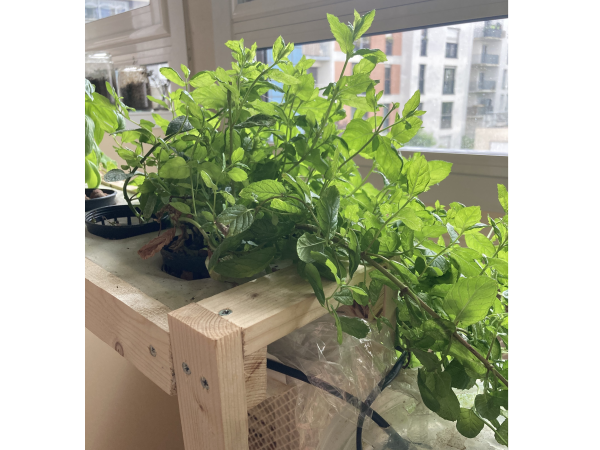
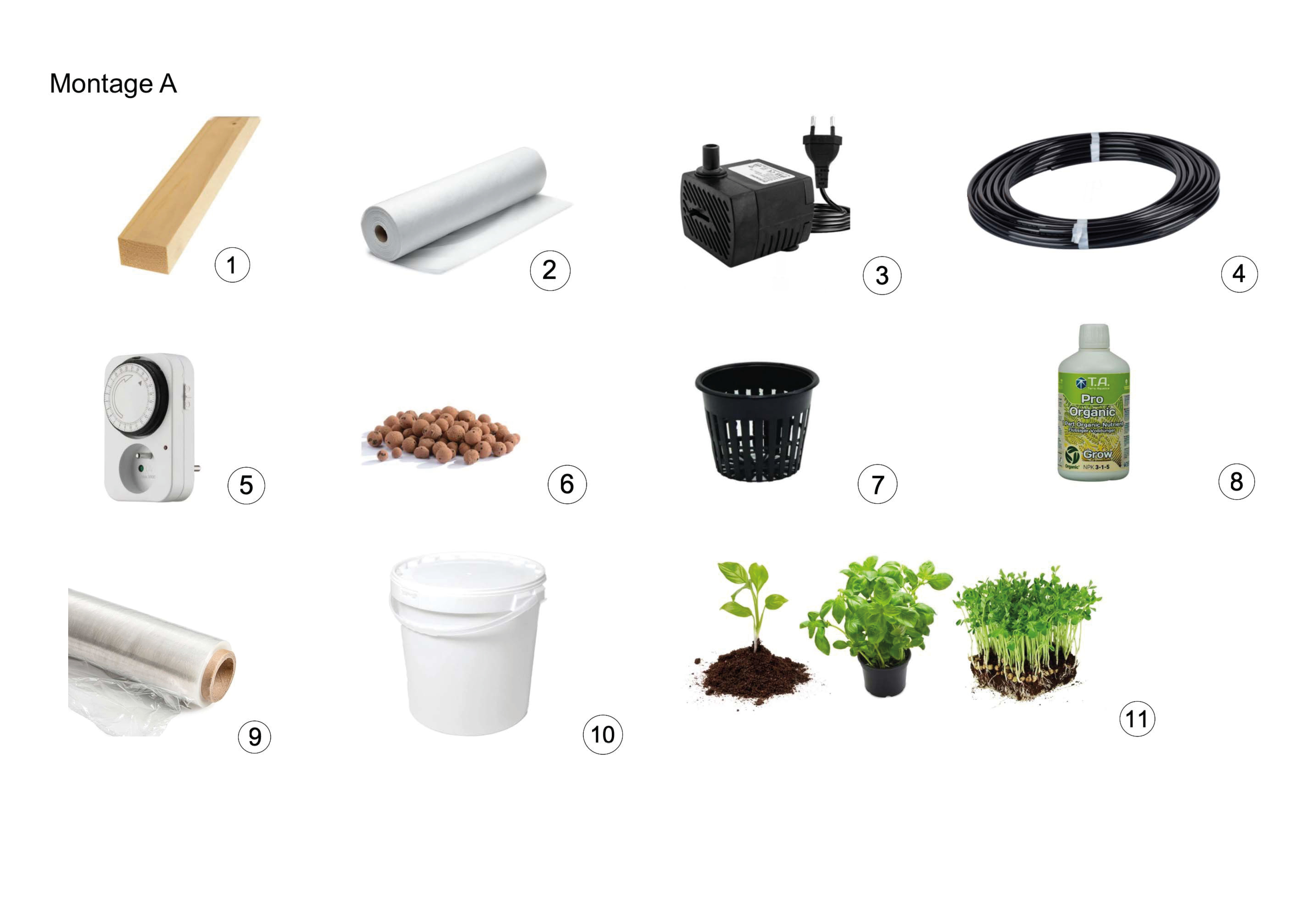
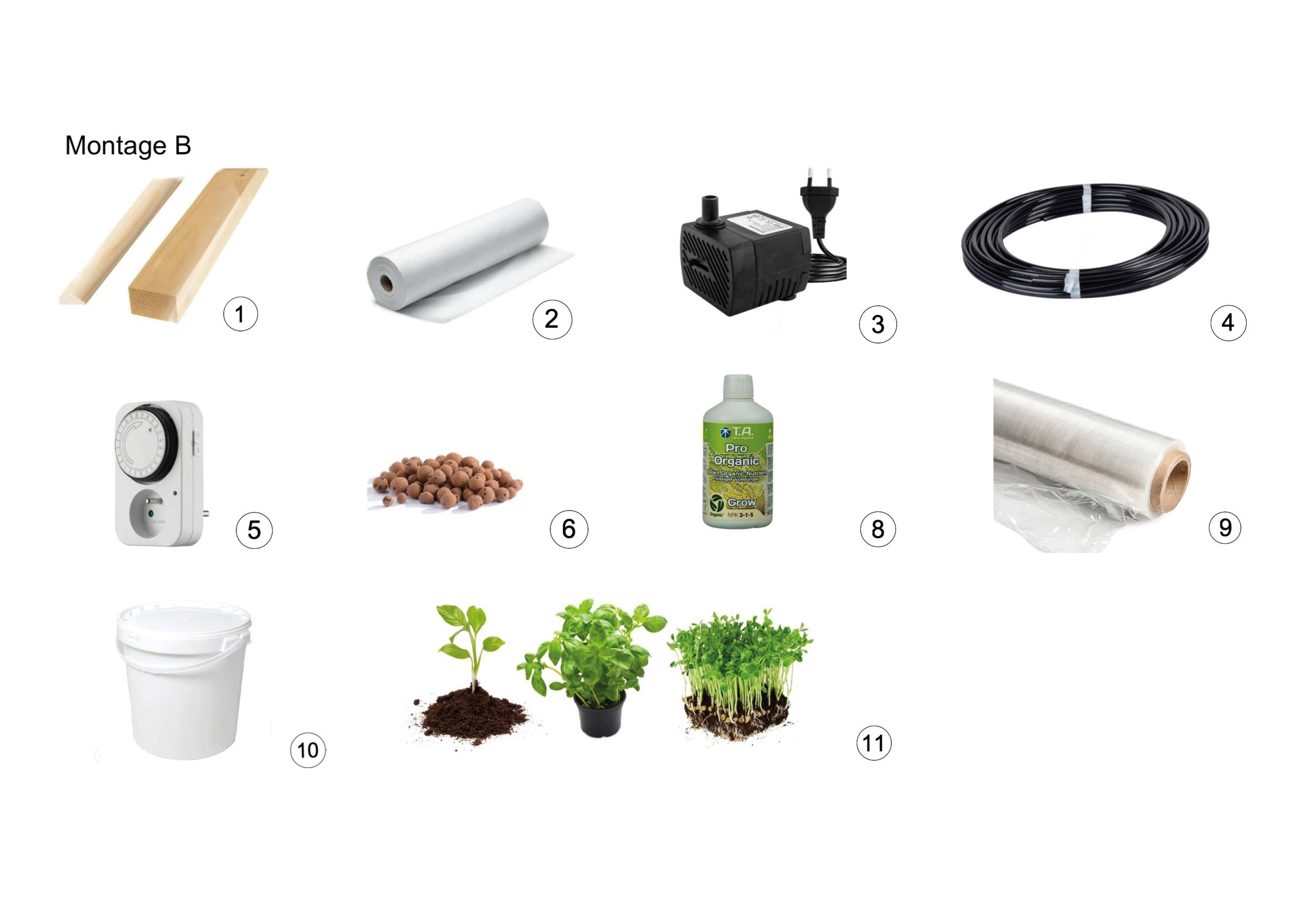
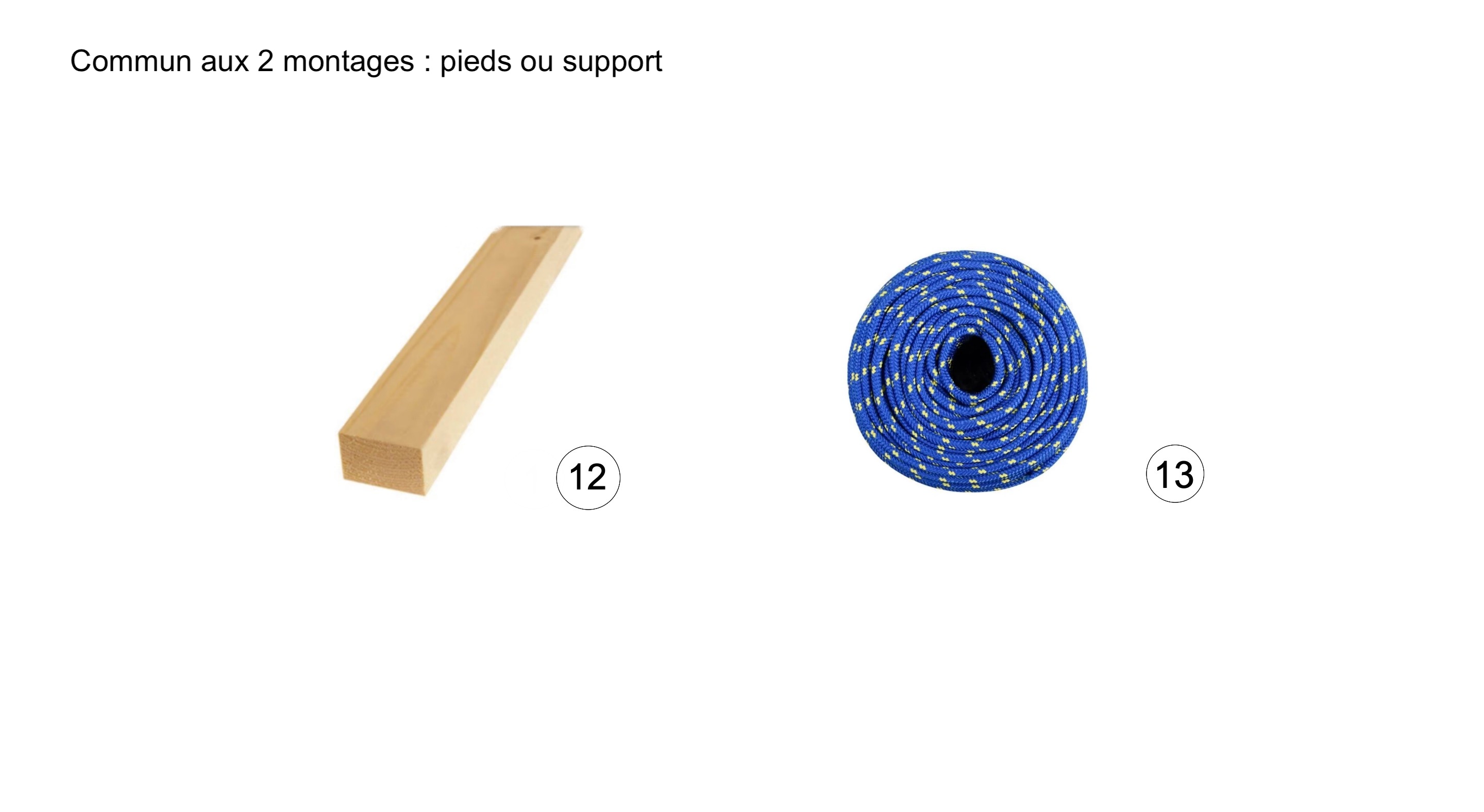


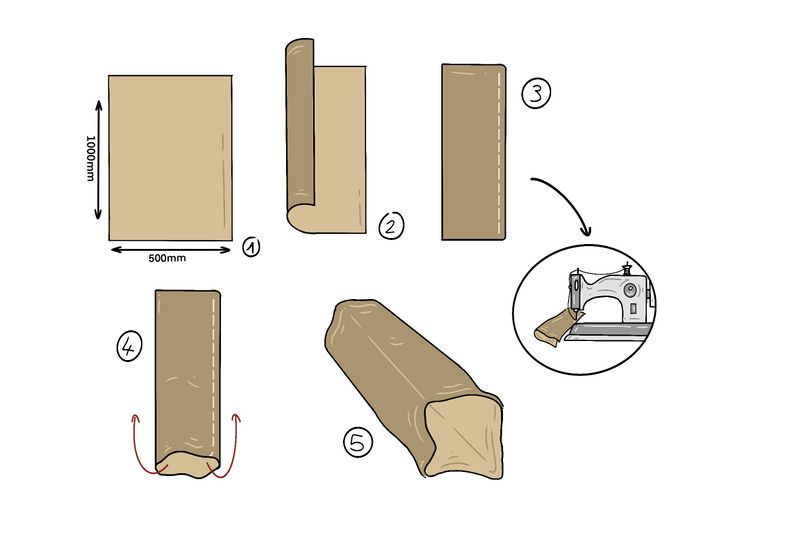

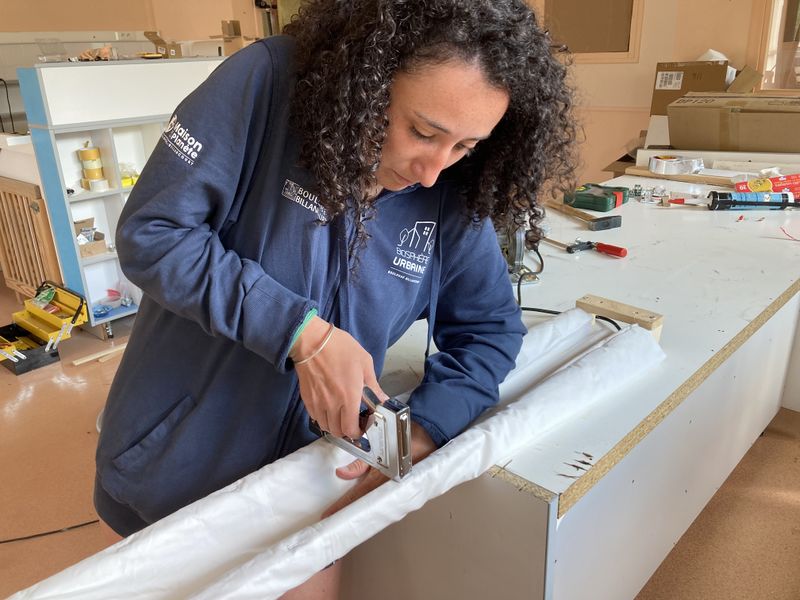
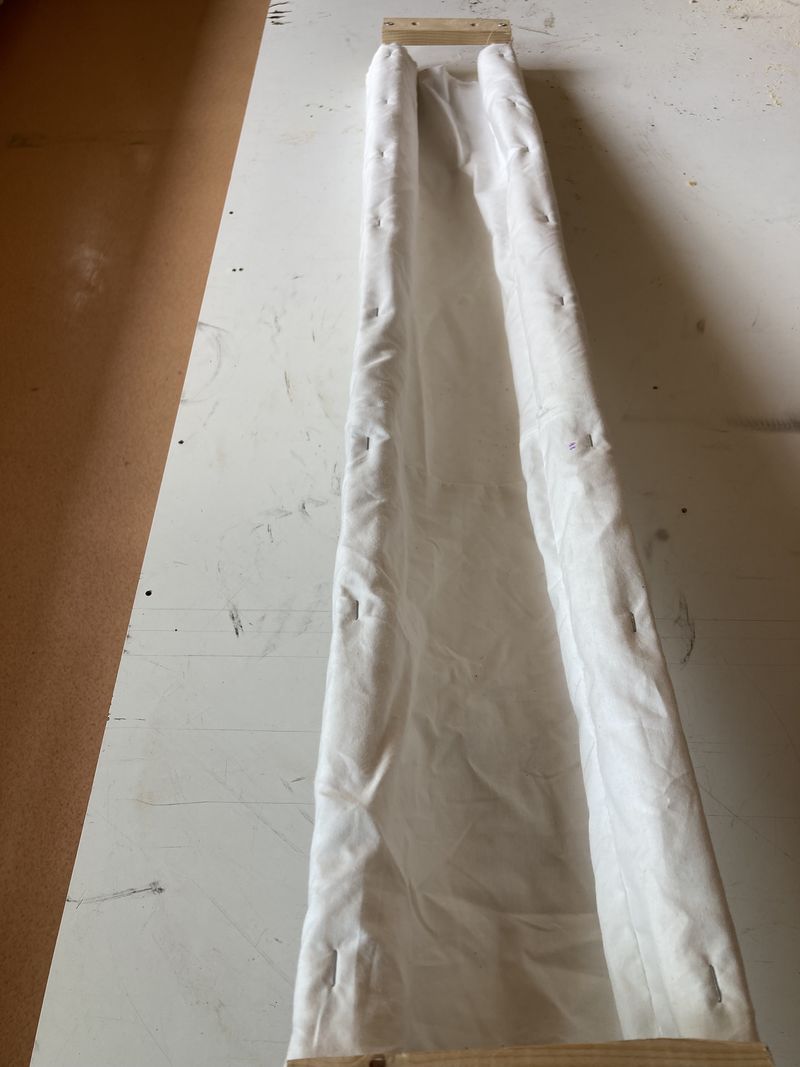
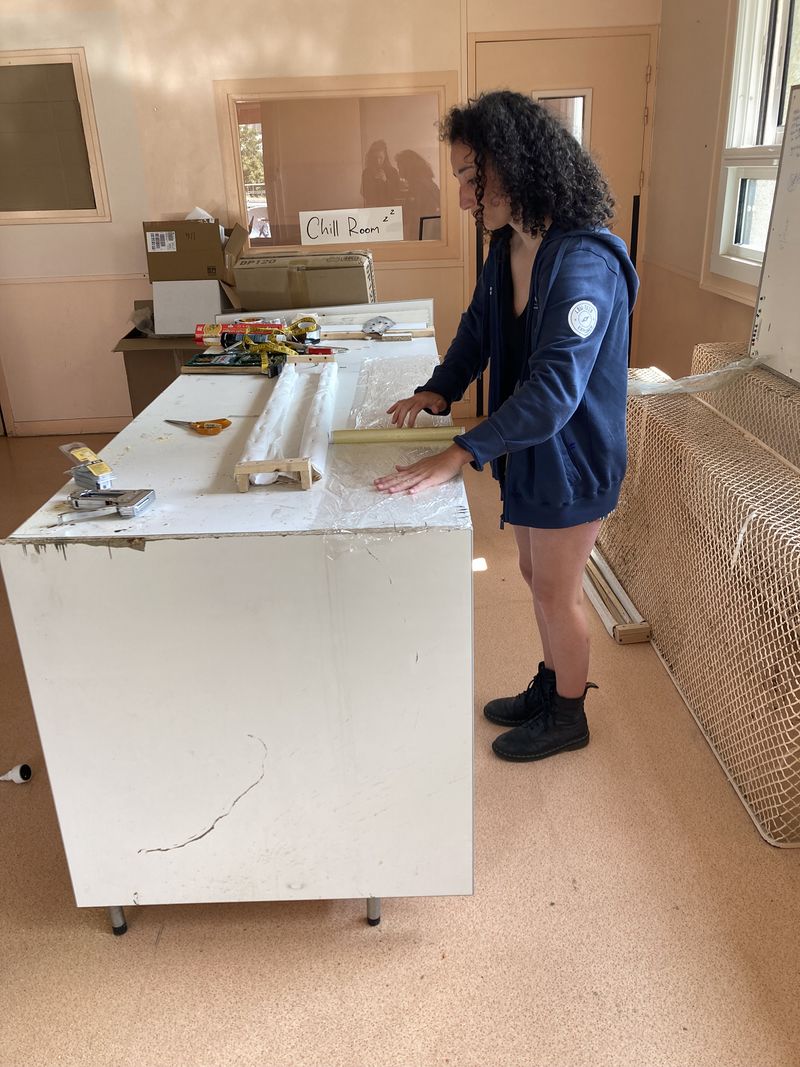
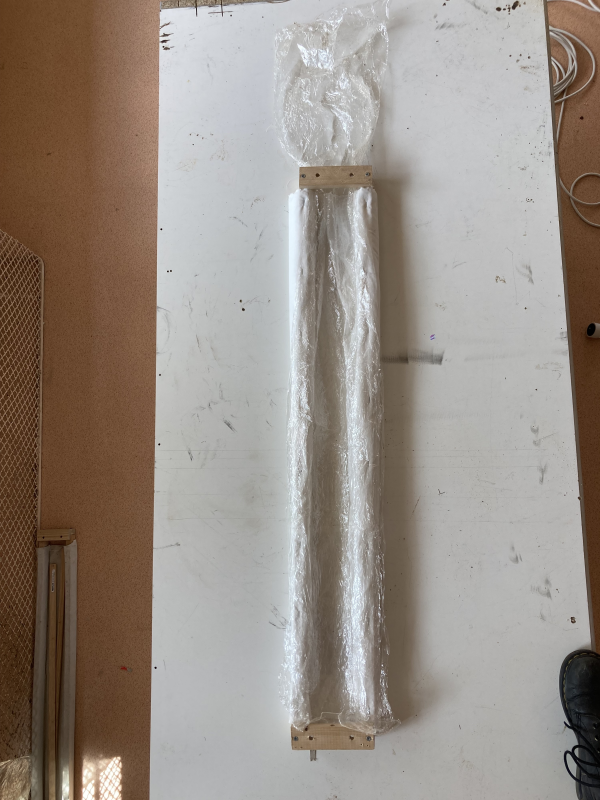
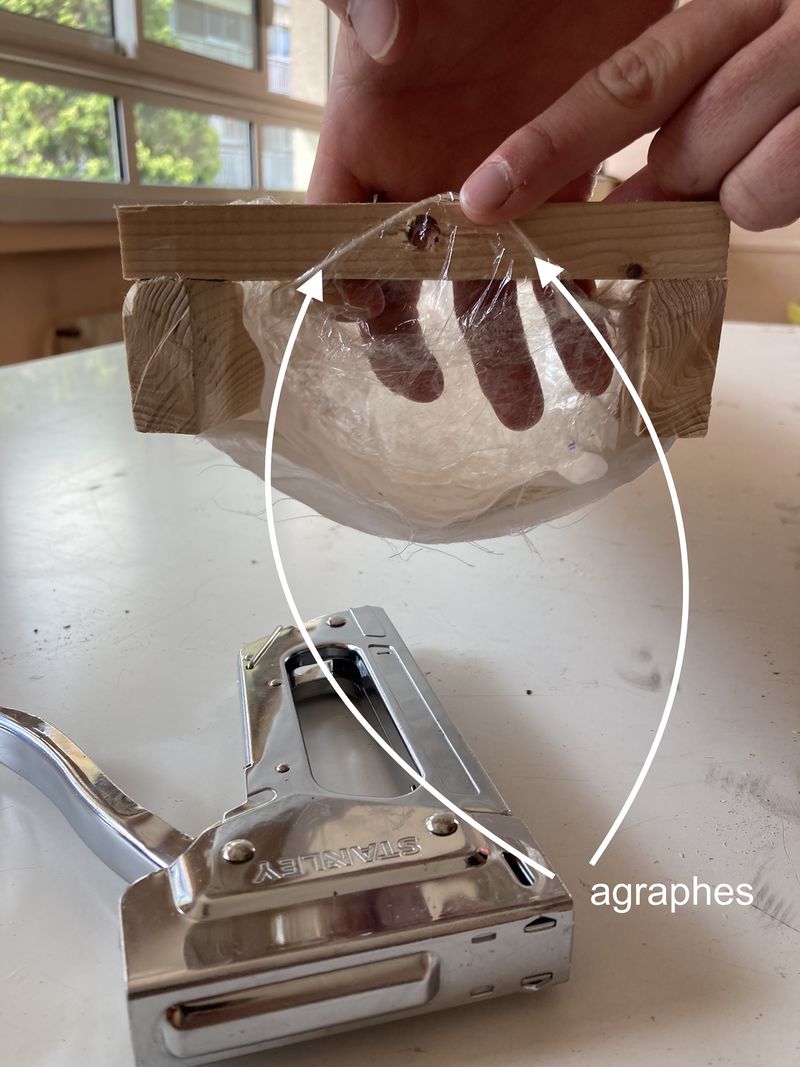
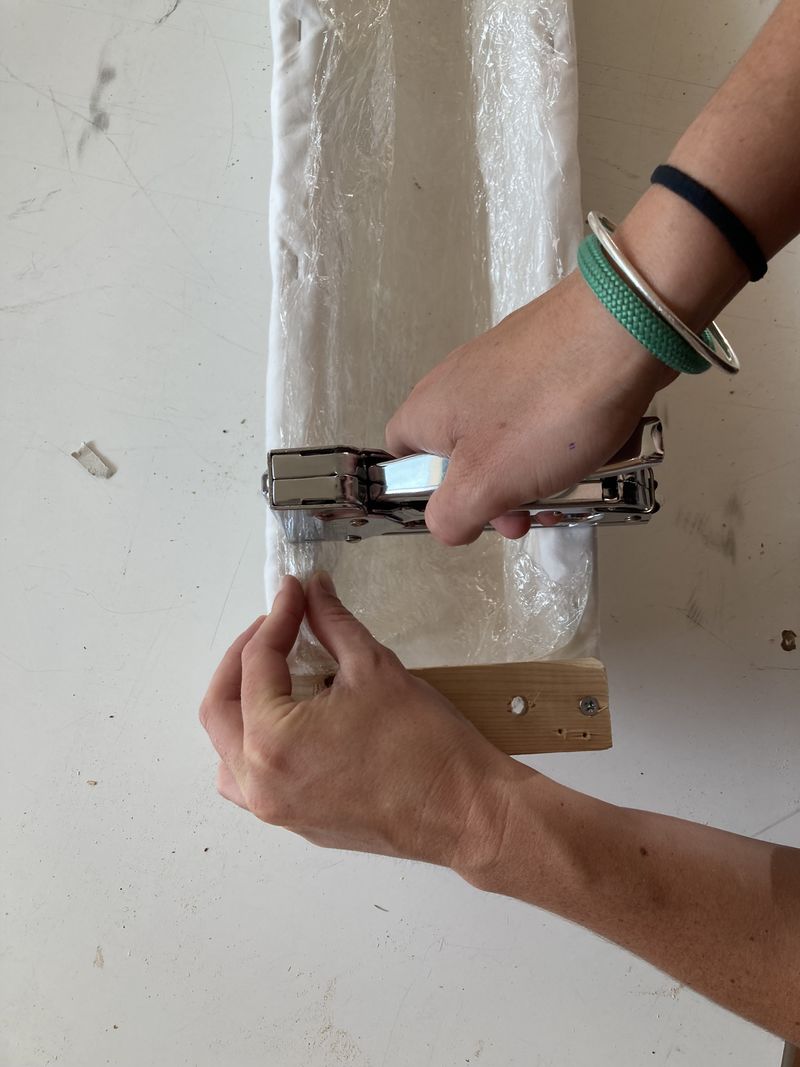

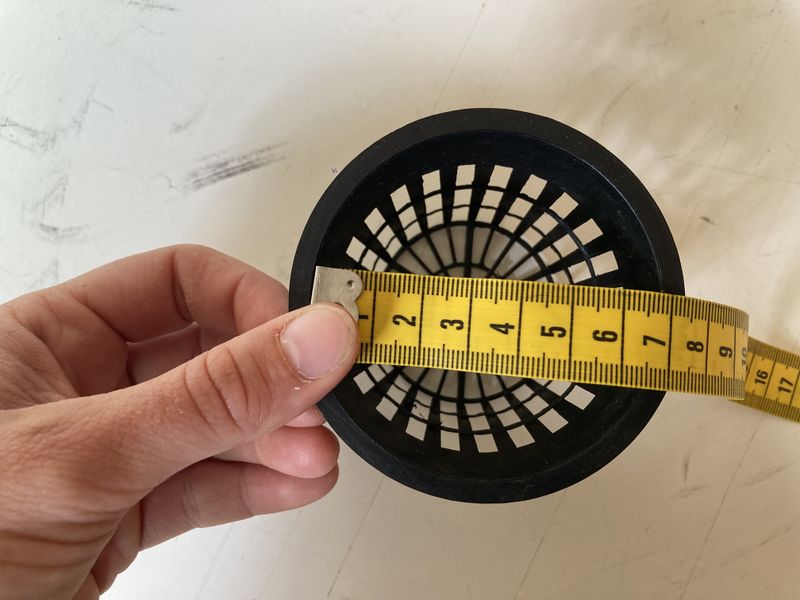
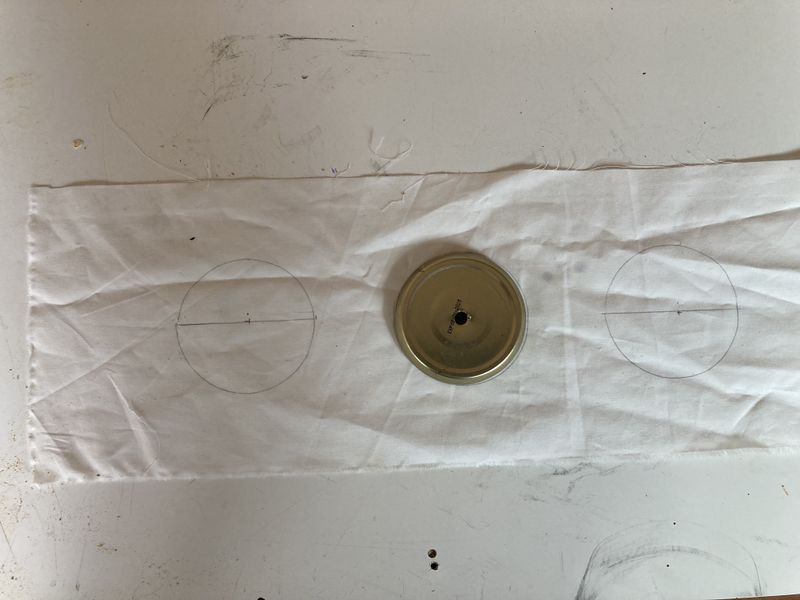
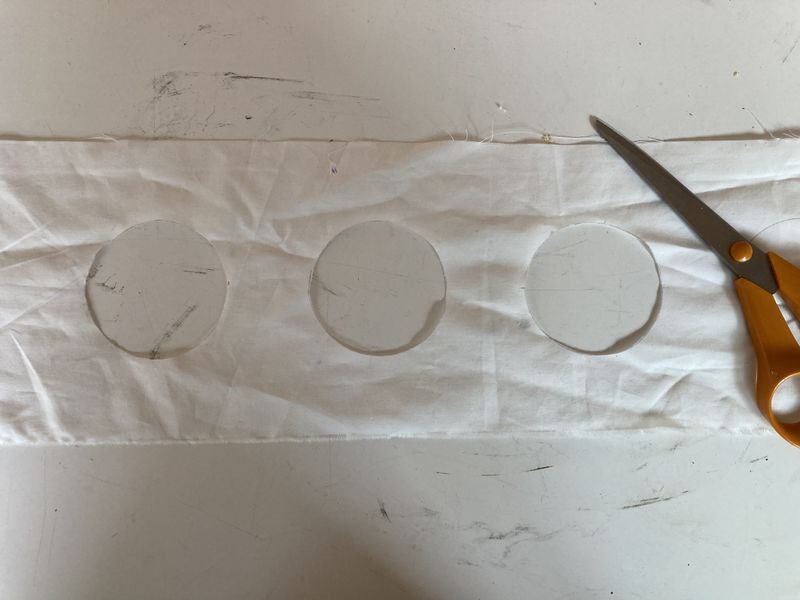

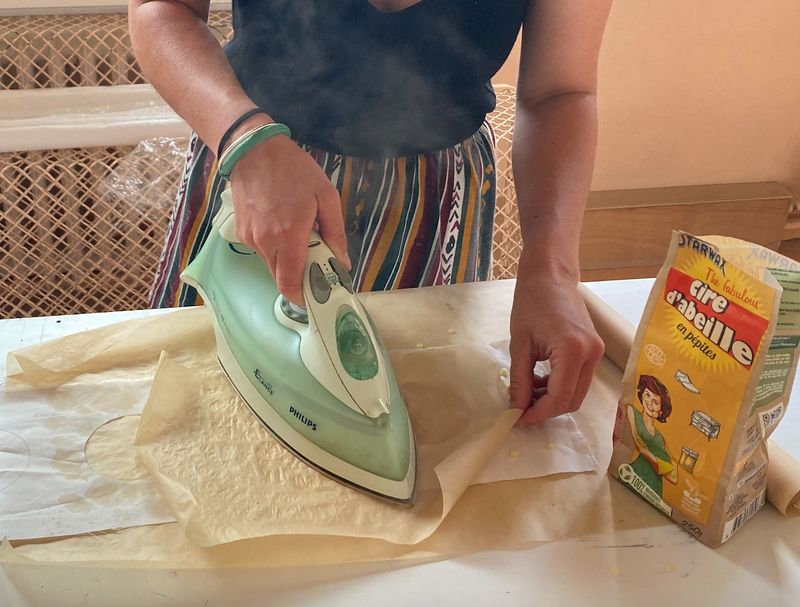
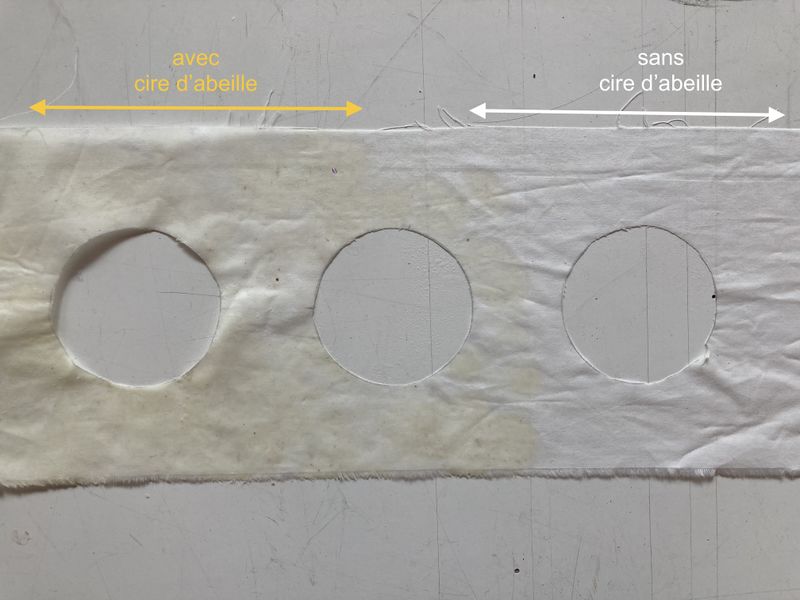
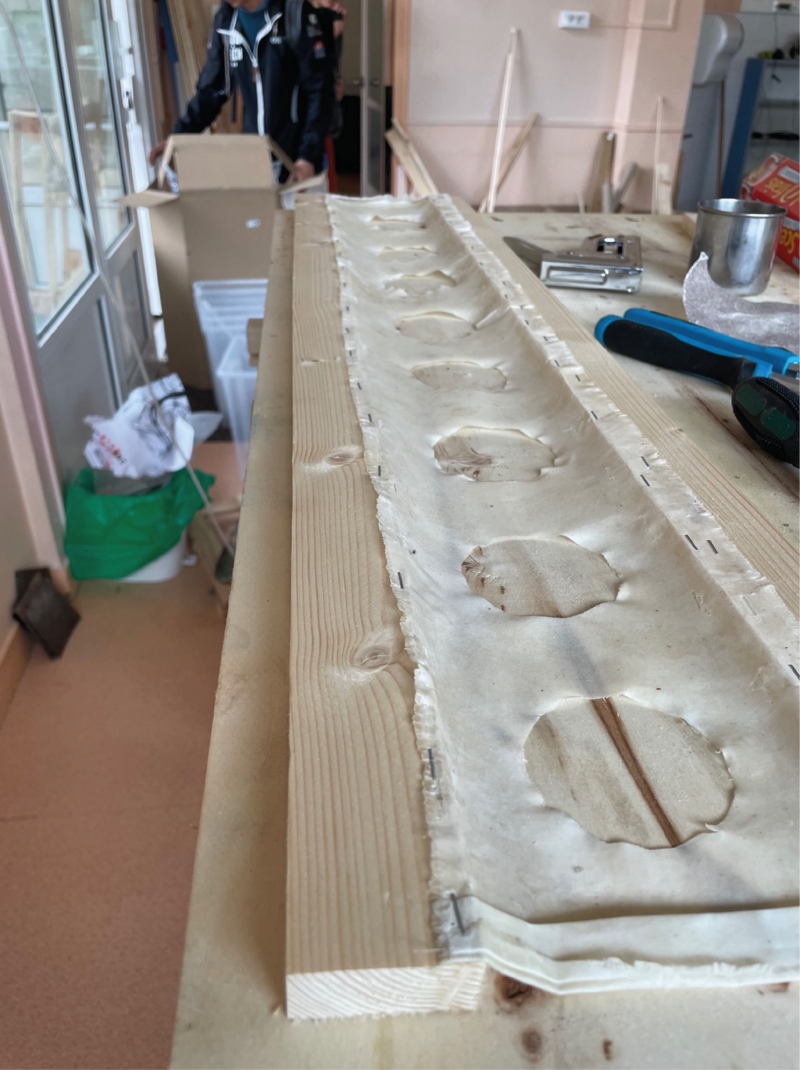

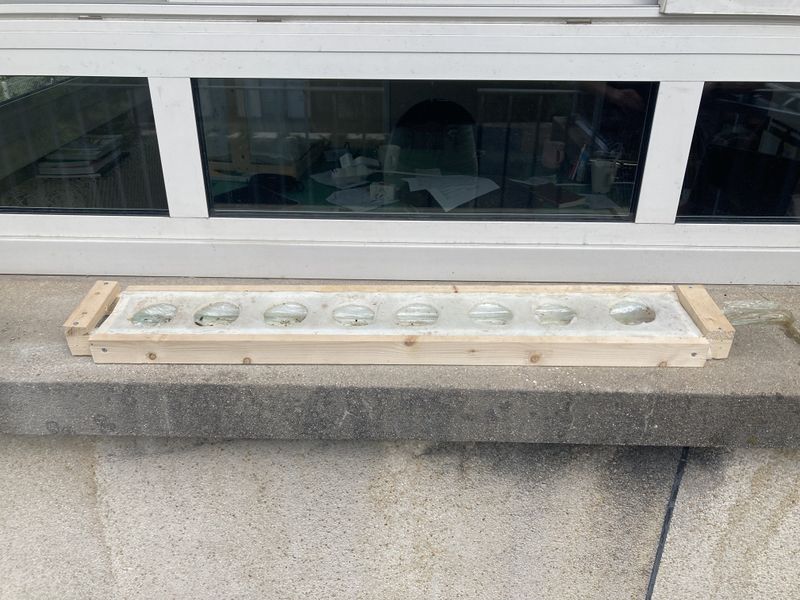
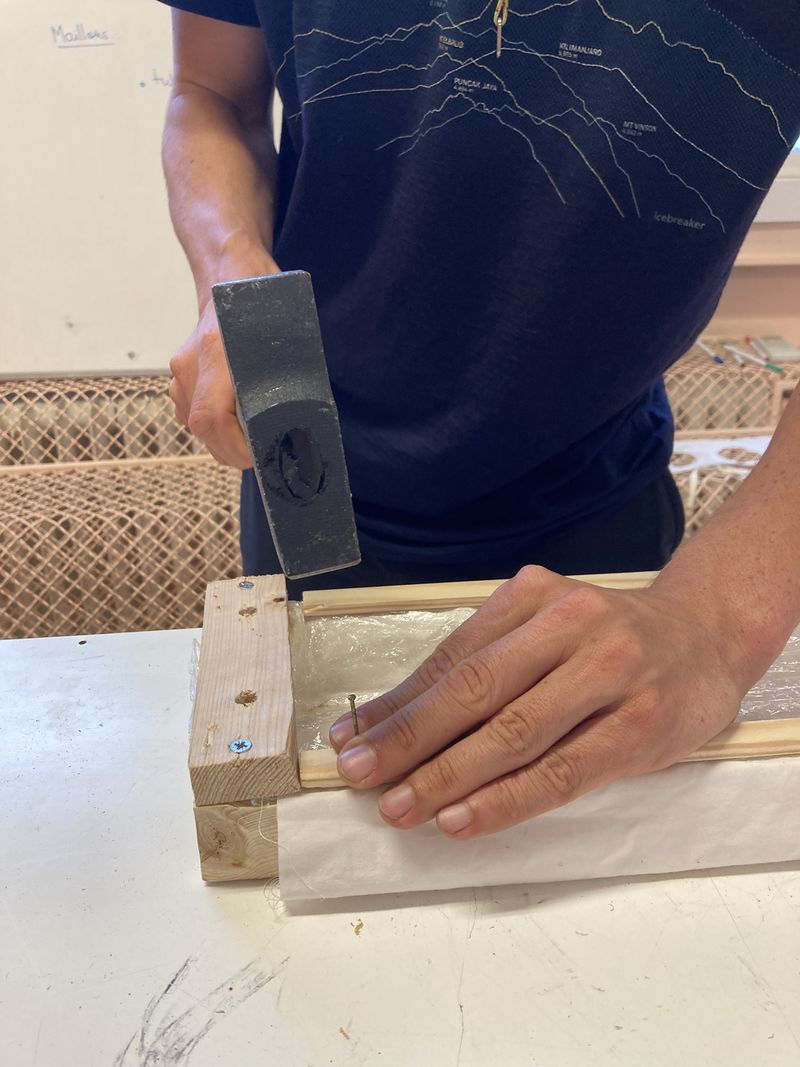

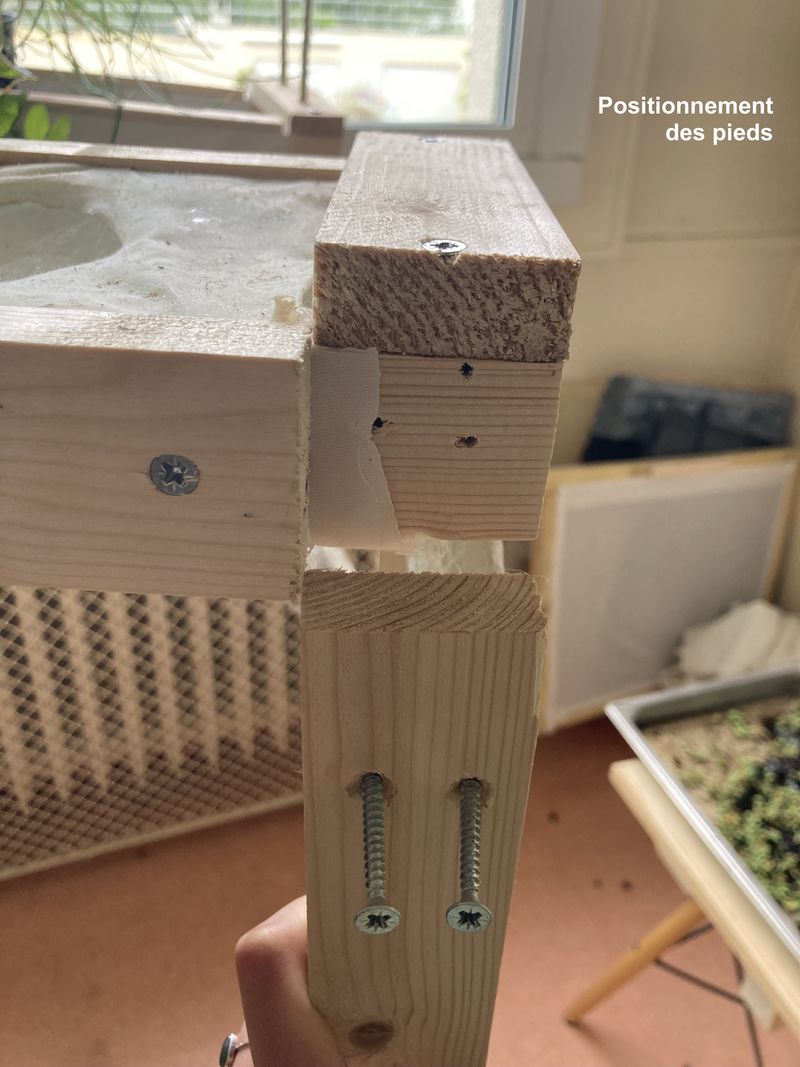
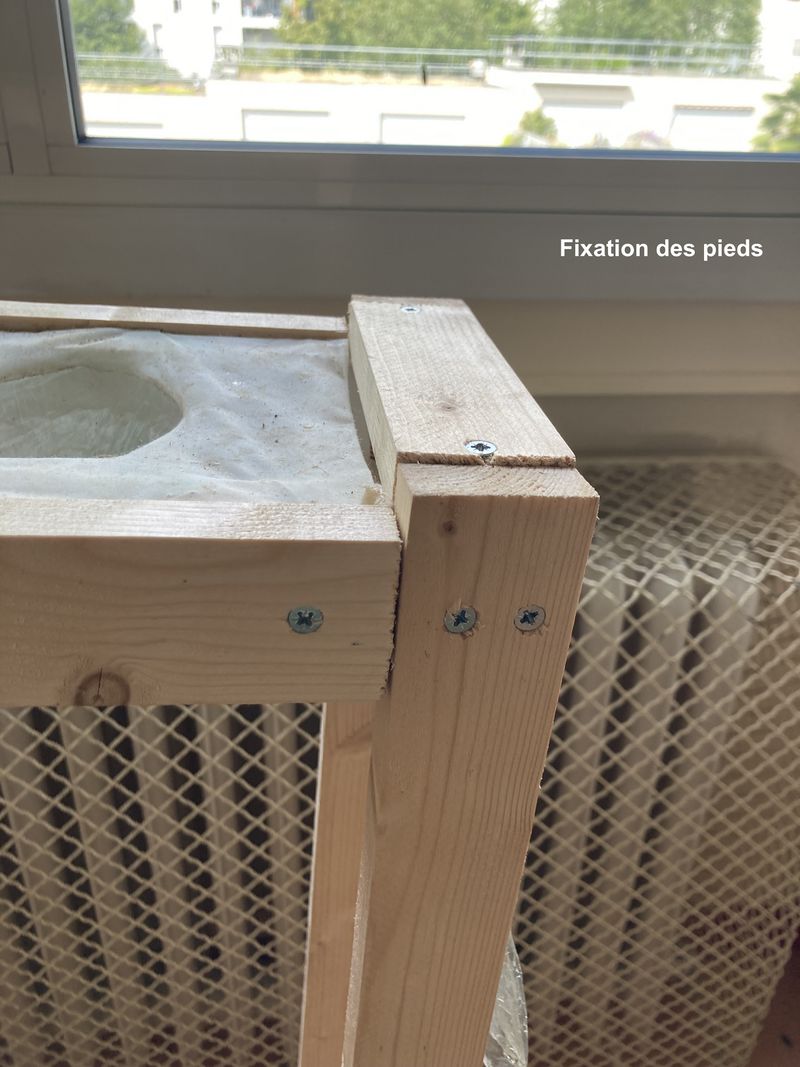

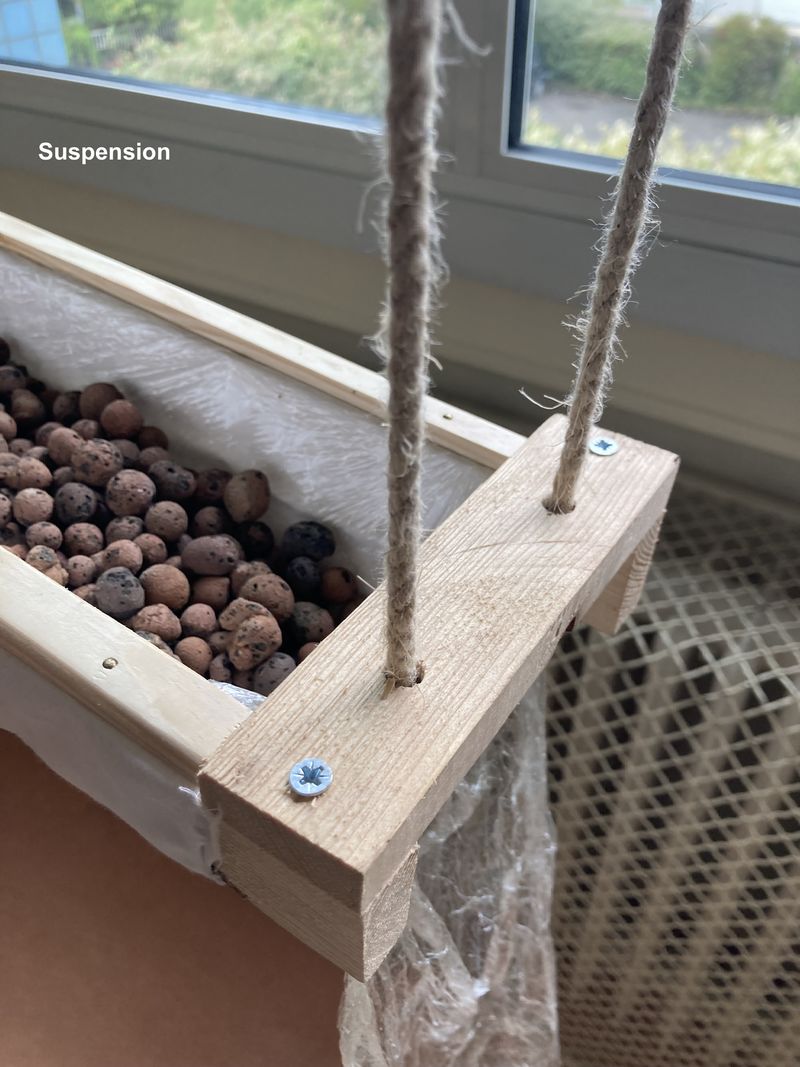

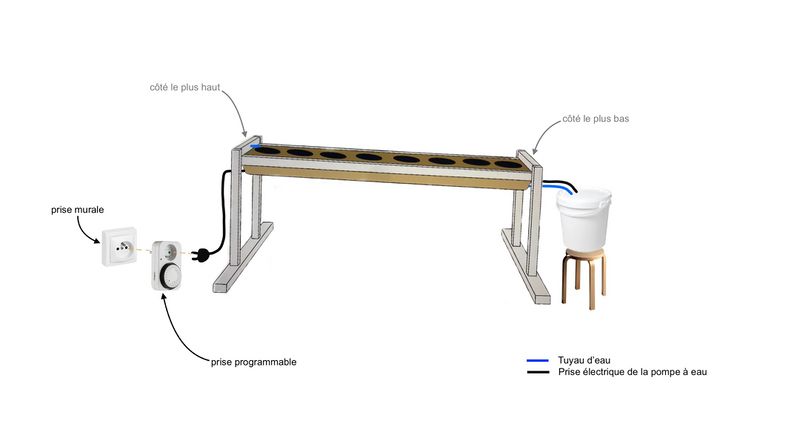
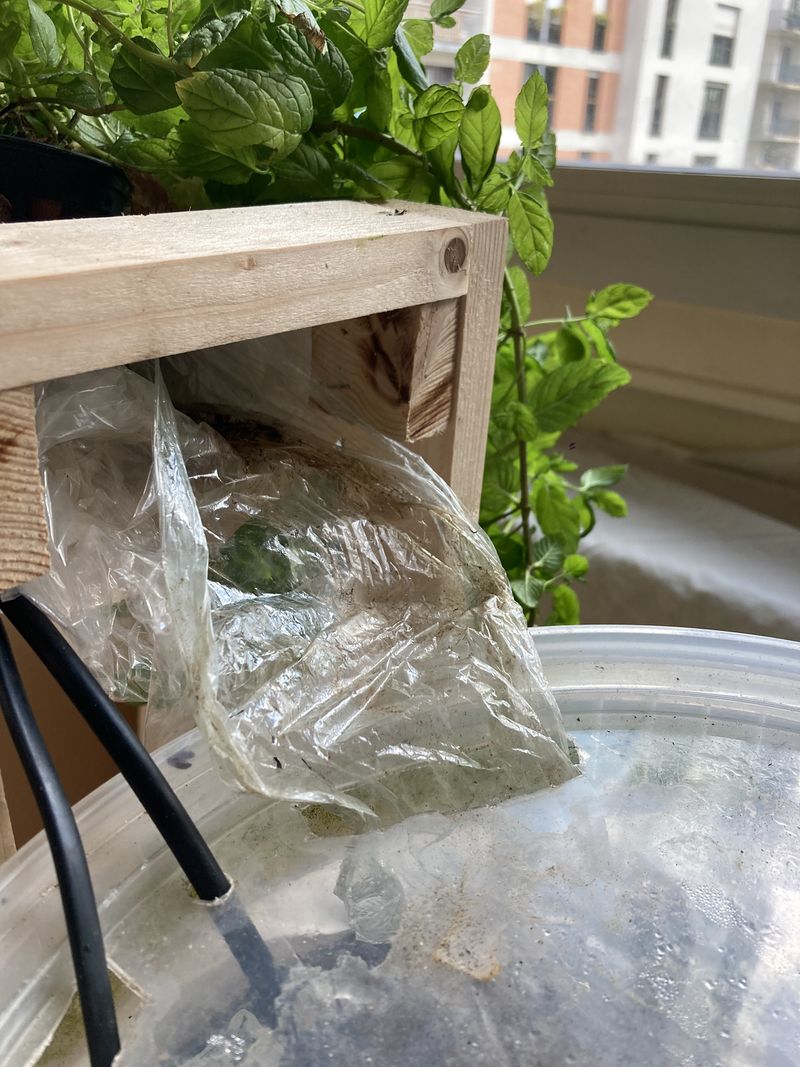
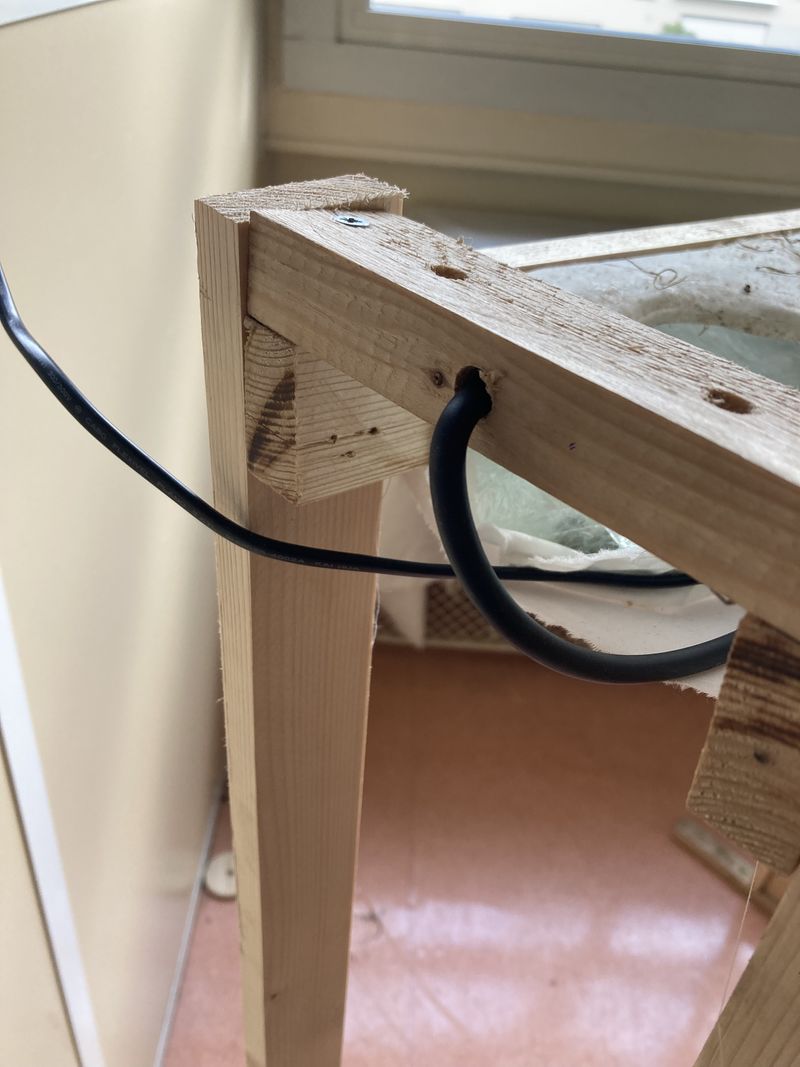

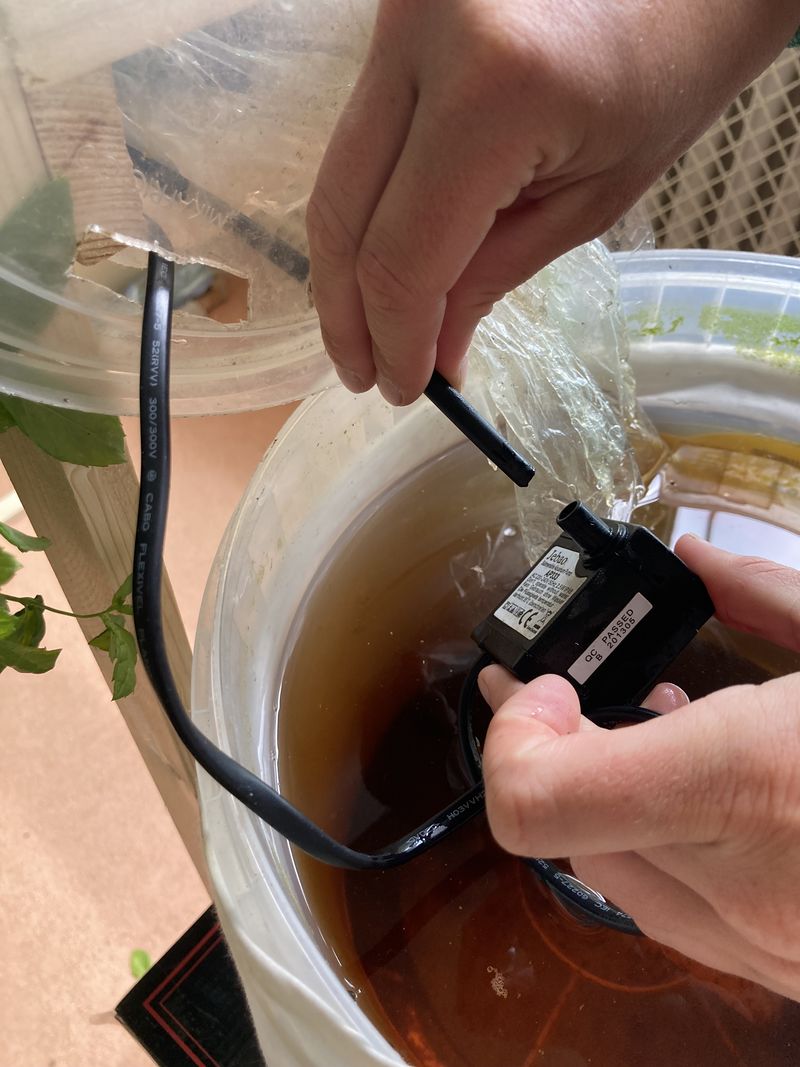




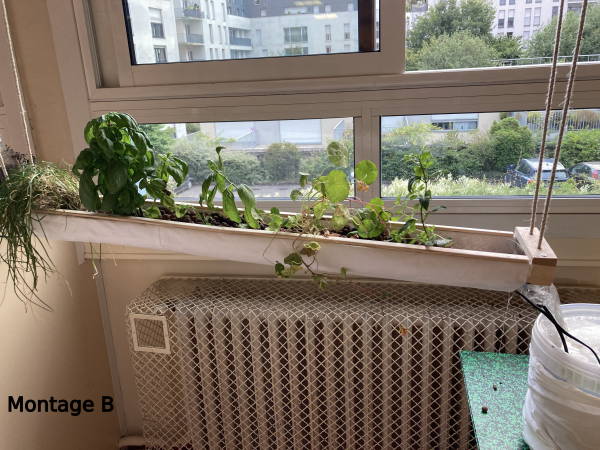
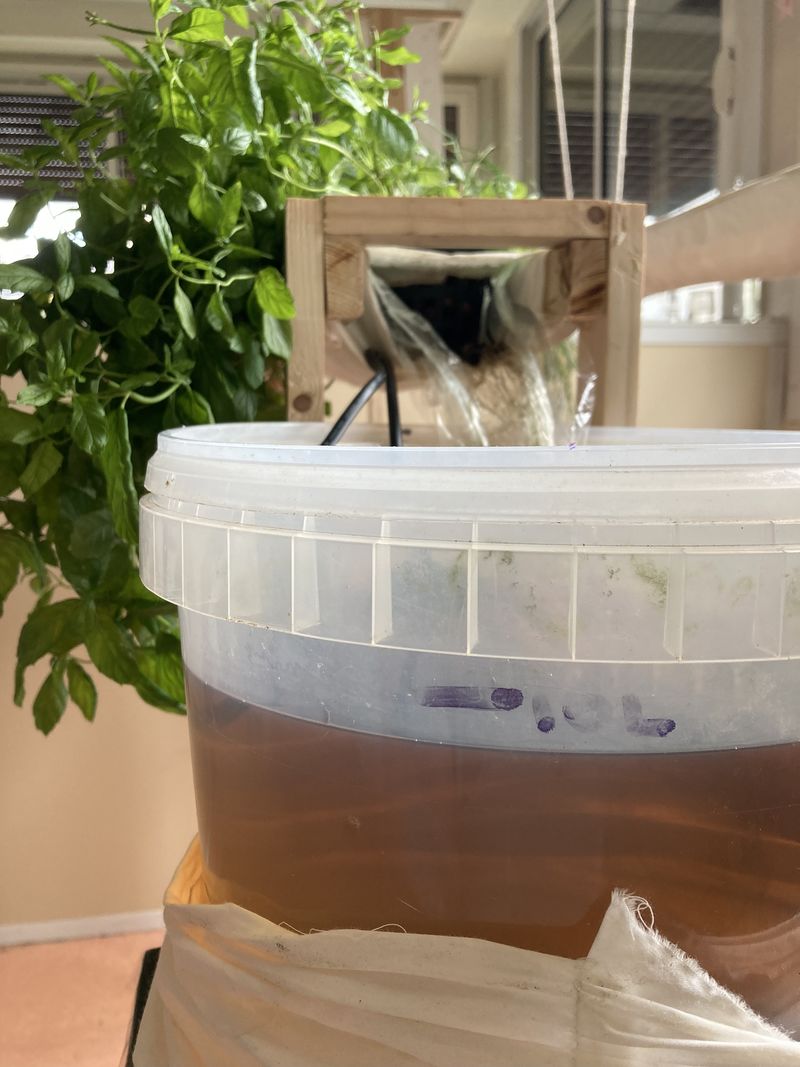
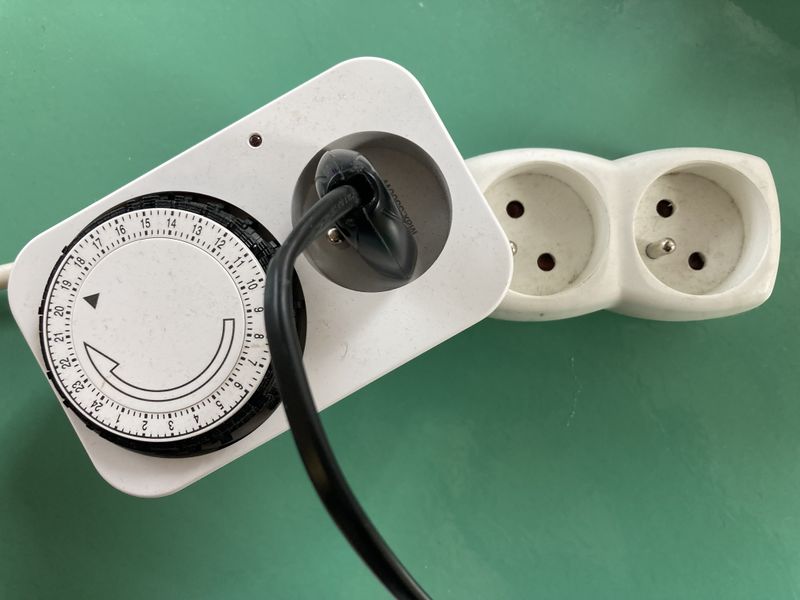
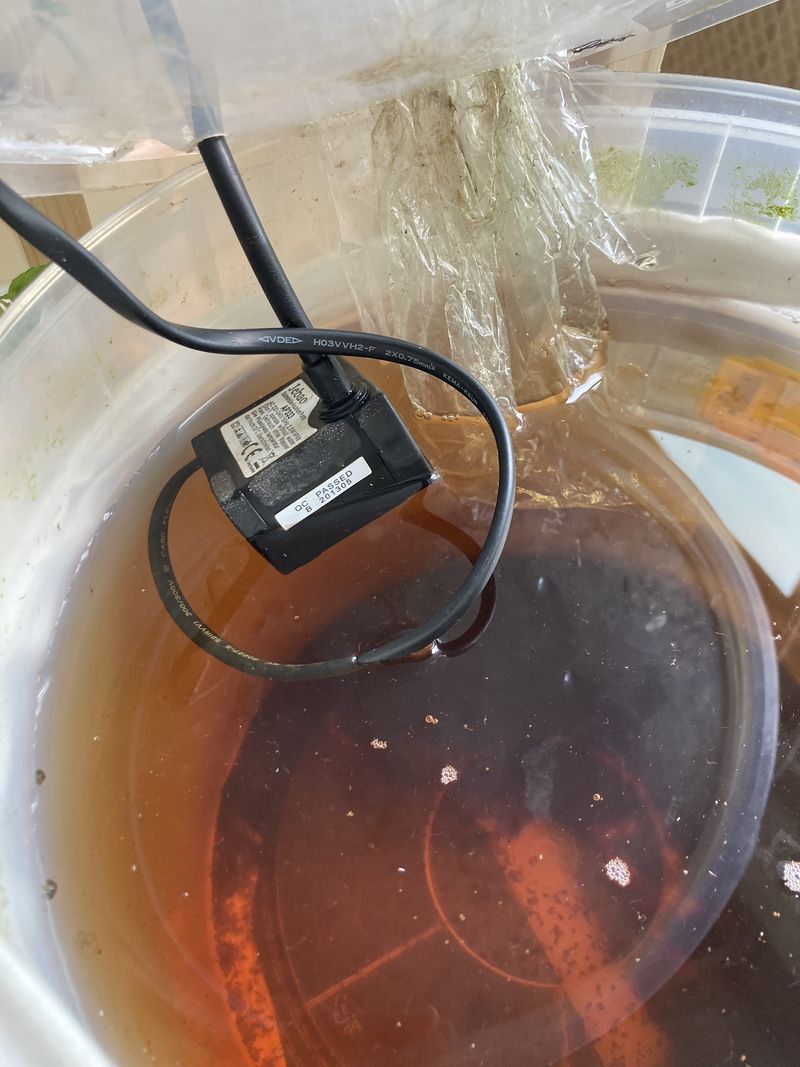
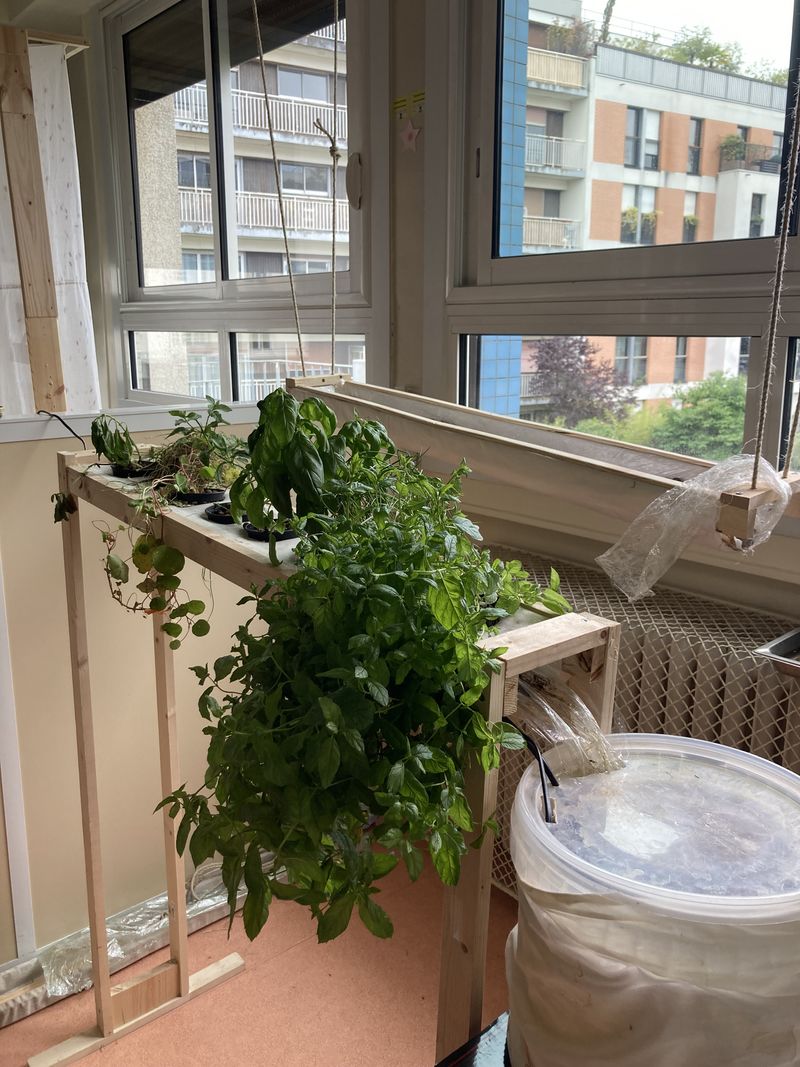



 Français
Français English
English Deutsch
Deutsch Español
Español Italiano
Italiano Português
Português